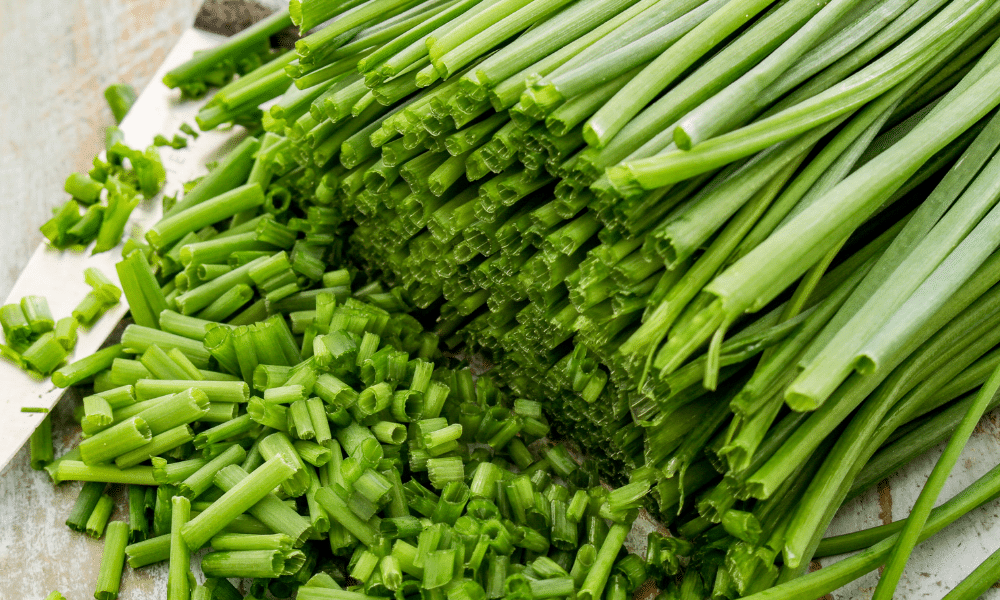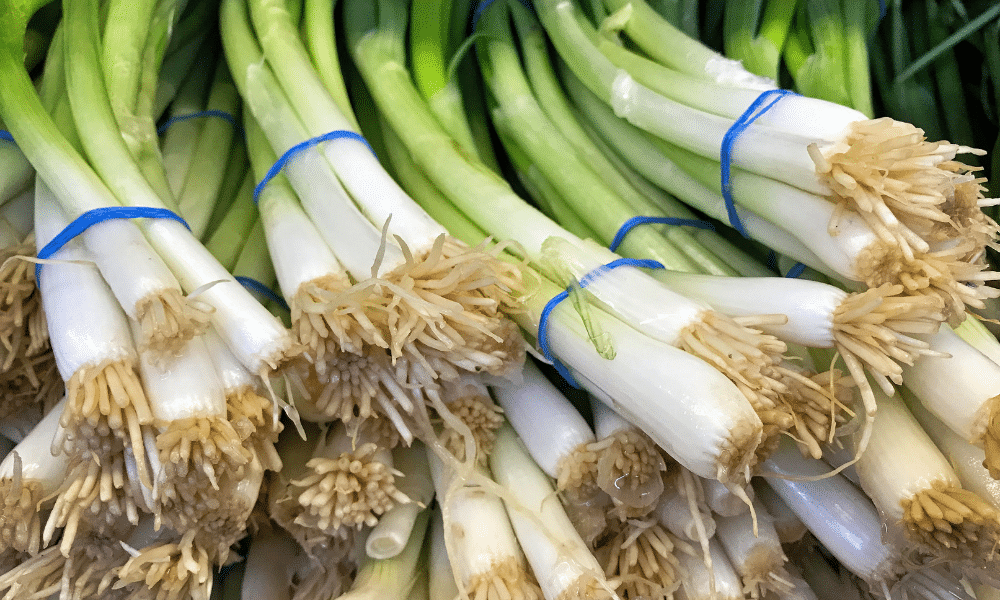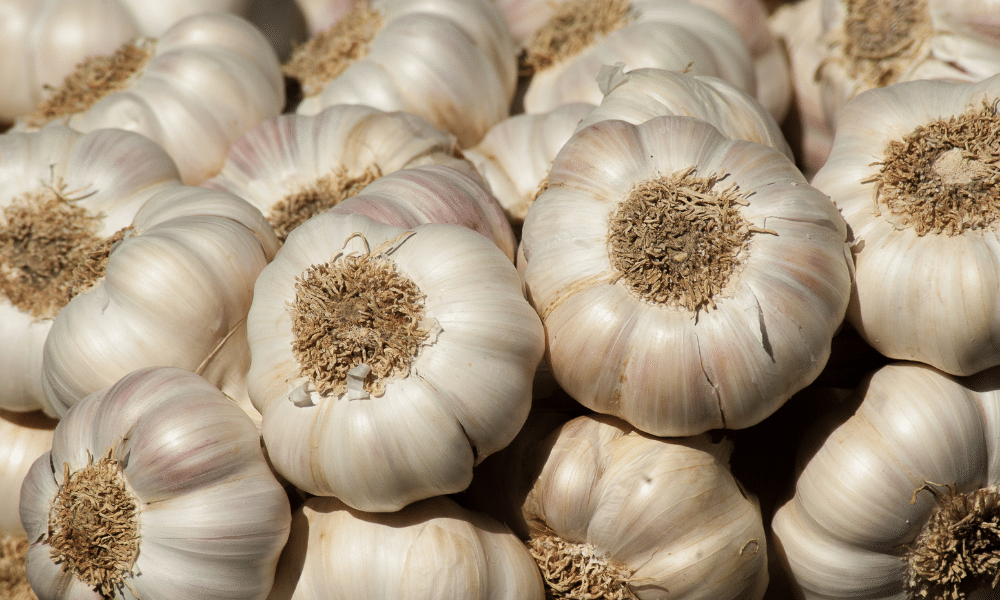Wild garlic is just as versatile as regular garlic. It can be used as a garnish or added in the last few minutes of the cooking to your dish to add a unique twist.
Not everyone will already have wild garlic – it tends to be an ingredient that is brought especially for certain dishes and has a short season.
But if you don’t want to buy wild garlic or can’t find it in the supermarket then what else do you have in your kitchen that can work just as well? What are the best substitutes for wild garlic?
Our 4 Substitutes for Wild GArlic
Wild garlic bulbs have a mellow taste but it’s the leaves that most recipes call for. The leaves are sweet, crunchy, and offer a unique delicate flavour.
Here are our top picks for substitutes that can offer the same flavours as wild garlic:
1) Chives
Chives are a herb more closely resembling onions than wild garlic. Though they still have a noticeable garlicky tang
Just like how wild garlic leaves can be used either as a garnish or as a dish booster, chives are a great go-to garnish. They are a vivid green colour and can add a splash of colour to any dish.
Even if you don’t realise it, you have probably had a meal that includes chives. They are a very versatile herb and go great with many savoury dishes.
Reduce the Use of Onion to Balance the Flavour
Chives will give your dish a stronger onion flavour when cooked with the rest of your meal.
If you are not a fan of onion, then half the amount of onion a recipe requires when ushing chives. Or only use chives as a garnish, not in the dish itself.

2) Spring Onions
Spring onions are essentially a younger version of a normal onion that has been harvested earlier. Because of this, their leaves tend to be chewier, unlike wild garlic leaves. Though this will not be an issue if you intend to use them as garnish.
Spring onions work well with heat. They will not wilt or shrivel up, meaning that you can add them to your dish earlier as it cooks.
This will give the spring onions time to release a stronger garlicky taste, stopping their onion flavour from becoming overpowering.
Try Growing Your Own – It’s Easy!
Spring onions are typically very cheap to buy anyway, but you can always grow your own to save a little money.
All you have to do is add the rooted end of the spring onions to mildly moistured soil and leave them on your kitchen windowsill. Within a week or two you will already have fresh spring onions growing.

3) Leeks
They may seem like an odd substitution for wild garlic, but leeks offer a complex flavour that can work just as well in a dish as spring onions or chives.
Leeks are essentially overly large spring onions, the only difference being that they have a very overpowering taste when raw.
There are a few additional steps leeks require to be able to release their delicate flavour. The leek’s preparation also dilutes some of its stronger flavours, preventing it from overpowering your dish.
Soak leeks in an ice water bath for at least an hour before use. Then, slice them lengthwise and finely chop them up.
The longer you leave your leeks to soak, the less overpowering they will be to your dish. Use 2/3 of the required wild garlic measurement when you use leeks as a substitution.
Don’t Use the Green Tops
Unfortunately, not every part of the leek is pleasant to eat. Their dark green tops do not offer the same sweetness that wild garlic leaves do. Instead, they add an unpleasant texture to many dishes.
If you have enough time then you could boil down the wasted parts of a leak to release its high levels of vitamin C. They can then be used in sauces, soups and stocks.
4) Garlic
Of course, it makes sense that you can replace wild garlic with regular garlic in a dish.
Most savoury dishes will call for the use of regular garlic anyway. It is a chef’s stable ingredient after all.
You won’t be steering too far away from the original wild garlic recipe, and you can still make a delicious dish.
Garlic offers many health benefits and can provide your dish with an intense flavour that wild garlic tends to lack. Because of this, use only 1/2 of the amount that a recipe requires.
Or, if you are a big garlic fan, use as much as you want. The chances are that you are familiar with what it is like to cook with normal garlic so do whatever you prefer.
Roast Garlic to Bring Out Nuttiness
Though garlic is not a nut, you can achieve a great nutty flavour if you roast them. Roasted garlic can then be used in winter soups, pesto, and in marinades to help deepen a meat’s flavour.
To roast garlic, chop off the top stalk and wrap up in silver foil. Then, place in a 205°C oven for 40 minutes.

Other Substitutes for Wild Garlic
Unless you regularly use chives and spring onions, you are not likely to have them stocked up in your fridge. So, here are a few more alternatives that you may have to hand:
- White Onion – White onions will not provide any garlicky taste, but your dish will not suffer if you use extra onion instead of wild garlic. Replicate wild garlic leaves by adding the onion later, creating a cruncher texture.
- Basil – Basil is also a common herb that many people have in their fridge. Whole basil leaves are the preferred substitute for wild garlic leaves compared to dried basil seasoning.
Summary
To conclude, wild garlic is mostly used in recipes for its sweet and delicate leaves.
Many herbs could replicate the texture of the leaves, but the taste of chives matches wild garlic the best. And it is much cheaper to buy.
